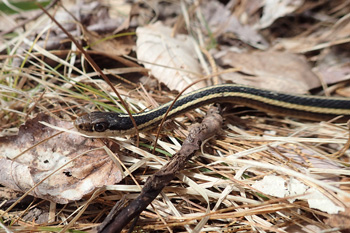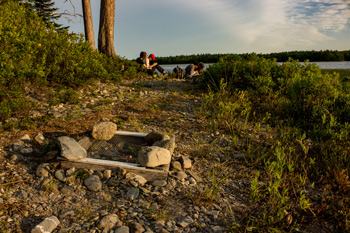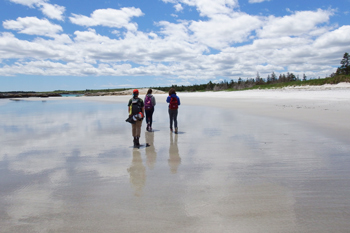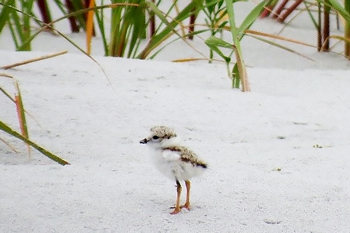Conserving species at Kejimkujik National Park and Historic Site

Keji has long been a place where people who feel a connection to the land volunteer with projects that require a helping hand. Visitors, local First Nations and community members all work together to protect these species.
A species at risk hotspot

photo: Diane Clapp
This area of the province contains three-quarters of Nova Scotia’s species listed under the federal Species at Risk Act and the provincial Endangered Species Act. This intense concentration makes the area one of Canada’s biodiversity hotspots. That’s a big part of the reason the Southwest Nova Biosphere Reserve was established.
About 70% of the land in Nova Scotia is privately owned. Individual landowners have a huge influence on the fate of our species at risk. With proper information, landowners can help protect species from harm. Many go beyond legal requirements and become active stewards, maintaining vital habitats.
A success story

photo: Elizabeth Aulenback
Volunteers have been helping to protect Blanding’s Turtle nests in Kejimkujik for more than two decades. Nests are laid in the spring and can be predated very soon after the female leaves the site. Volunteers often wait at a nesting site until the wee hours of the morning for a turtle to lay all of her eggs and to finish burying them. Volunteers also helped to build the boxes that are used to cover the nests until the hatchling emerge in the fall.
In 2017, something very special happened during the Blanding’s Turtle nesting season. A turtle named Dillon Lorraine became the first turtle from a protected nest to lay eggs in a nest of her own! A new nesting female in the population is very important for such a long lived species, so it was wonderful news for everyone who has been working so hard to help these turtles.
Volunteers come through
Volunteers dedicate enormous amounts of time and energy to help many species in Kejimkujik. Since the year 2000, they have contributed almost 181 000 hours to species at risk recovery and environmental conservation in and around Kejimkujik. This includes initiatives for species such as Blanding’s Turtles, Eastern Ribbonsnakes, Atlantic Coastal Plain Flora, Piping Plovers, and Monarch Butterflies.
Volunteers are essential to the recovery of Canada’s species at risk. A small number of Keji staff need to cover large areas and perform many varied tasks during the busy field season. Volunteers assist and support Keji staff, and are eager to be involved with hands-on, long-term recovery efforts. These experiences are fun and memorable, and the volunteers can see how they are making a difference.
They contribute as much time as they can and all efforts are valued and appreciated. Many hundreds of volunteers and landowners are now engaged and involved in species at risk recovery and environmental conservation in the biosphere reserve.

of Blanding's Turtles
photo: Lachlan Riehl

Volunteers are not just helpful, they are essential!

Volunteers are recognised for their amazing contributions through annual celebrations and year-round at the Walk of Honour behind the Kejimkujik Visitor Centre. If you would like to get involved visit Kejimkujik’s Volunteer Program or contact us at volunteer.keji@pc.gc.ca
If you would like more information on species at risk in Nova Scotia, there is a species at risk guide that was created to increase awareness, generate sighting reports, and encourage stewardship. For each of the 42 species at risk, there’s an information page containing photos, identifying features, a description of habitat, and other interesting points.
- Date modified :